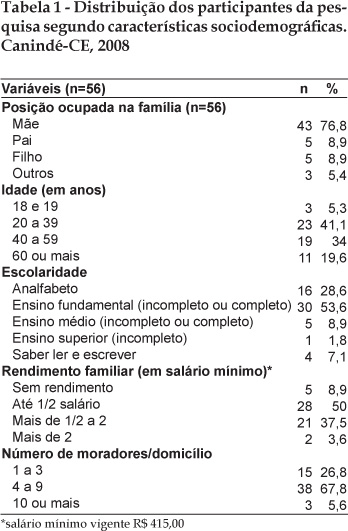Aimed to investigate the correlation between water tanks and infant diarrhea. Quantitative and transversal study, held in Canindé-CE, Brazil, with 56 families. The main sources of water used before the construction of tanks were "cacimbão" (21-37.5%) and dam (17-30.4%). There was a linear inverse correlation and relation statistically significant between the rates of infant diarrhea and the number of tanks built (r =-0.943; p=0.001). Chlorination was the main type of water treatment before (46-82,1%) and after (37-66%) of the acquisition of the tank, but with incorrect dilution (41-89,2%). Tanks to capture rainwater reflected in an improvement of child health in the region, but people still need to improve the treatment steps of water to be consumed.
Diarrhea, infantile; Water supply, rural; Water treatment; Potable water; Nursing




